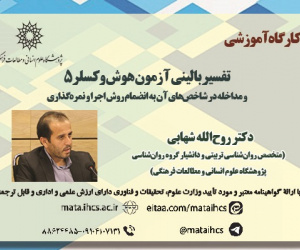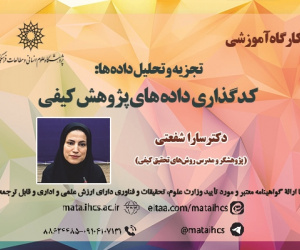تعابیر قرآنی به منزله ی نشانگان فرهنگی مشروعیت بخش به شاه اسماعیل اول صفوی؛ مطالعه ی موردی فتوحات شاهی (مقاله علمی وزارت علوم)
درجه علمی: نشریه علمی (وزارت علوم)
آرشیو
چکیده
تأسیس دولتی شیعه مذهب در جامعه ای که اکثریت آن دل در گرو مذهب تسنن داشت و سلطان سلیم عثمانی نیز سودای بازآفرینی خلافت اهل سنت را داشت، می توانست زمینه ساز بحران در مبانی مشروعیت دولت صفوی شود که پس از شکست در نبرد چالدارن، عمیق تر نیز می گردید. در این شرایط، مورخان وابسته ی به دربار صفوی دریافتند که بازیابی چهره ی قدسی رهبر طریقت صفوی و توجیه مشروعیت سیاست مذهبی و نظامی شاه اسماعیل، تنها در صورتی به تثبیت حاکمیت دولت صفوی می انجامد که با خاطره ی جمعی ایرانیان سنی مذهب سازگار باشد، و اعتبار خود را از آن بگیرد. در واقع، تاریخ نویسان به حلقه ی مشترکی از نشانگان فرهنگی نیاز داشتند که روایت تاریخی پیروزی ها و شکست های شاه اسماعیل را با تعابیر دینی اهل سنت ایران، پیوند زند. نگارندگان با ترسیم نظم گفتمانی شرق جهان اسلام، پس از حملات مغول، و مطالعه ی موردی فتوحات شاهی، در پی توضیح ماهیتِ این نشانگان فرهنگی برآمدند. کاربست این رهیافت ما را بدین نتیجه رهنمون ساخت که تعابیر قرآنی، همان نشانگان فرهنگی مشترکی بود که میان خاطره ی جمعی ایران زمین و روایت فتوحات شاهی از تأسیس دولت صفوی، پیوند می زد. بر این اساس، امینی هروی از حاکمیت چندصد ساله ی قرآن و سنت بر ذهن و ضمیر اهل سنت ایران، برای توجیه خشونت مذهبی و نظامی شاه اسماعیل و گذار به نظم سیاسی جدید، نهایت بهره را برد. بدین ترتیب ضمن تخلیه ی تعابیر قرآنی از دلالت های معرفتی خود و با برجسته ساختن دلالت های ایدئولوژیکی مانند عدالت محوری، اتصال به خاندان نبوت و امامت، کفرستیزی و نماینده ی خواست الهی بودن شاه صفوی، مشروعیت این دولت را تضمین کرد.Qur'anic Interpretations as Cultural Signifiers Legitimizing of Shah Ismail I of Safavid: A Case Study of the Royal Conquest
The establishment of a Shia state in a society predominantly Sunni, where Sultan Selim of the Ottoman Empire aimed to restore Sunni Caliphate, could lead to a legitimacy crisis for the Safavid state, which deepened after their defeat in the Battle of Chaldiran. In these circumstances, Safavid court historians realized that reclaiming the sacred image of the Safavid order's leader and justifying Shah Ismail's religious and military policies would stabilize the Safavid state only if it aligned with the collective memory of Sunni Iranians and derived its legitimacy from it. Essentially, historians needed a common set of cultural signifiers that could link the historical narrative of Shah Ismail's victories and defeats with the religious interpretations of Iran's Sunni community. By outlining the discursive order of the Eastern Islamic world post-Mongol invasions and through a case study of the "Futuhat-i-Shahi," the authors aim to explain the nature of these cultural signifiers. This approach leads to the conclusion that Qur'anic interpretations served as the common cultural signifiers connecting the collective memory of Iran and the narrative of "Futuhat-i-Shahi" in the establishment of the Safavid state. Accordingly, Amini Heravi utilized the centuries-old authority of the Qur'an and Sunnah over the minds of Iranian Sunnis to justify Shah Ismail's religious and military violence and transition to a new political order. By decontextualizing Qur'anic interpretations from their epistemological connotations and emphasizing ideological connotations such as justice, the continuation of the Prophetic and Imamate lineage, anti-infidel sentiments, and portraying the Safavid Shah as the representative of divine will, he ensured the legitimacy of this state.








